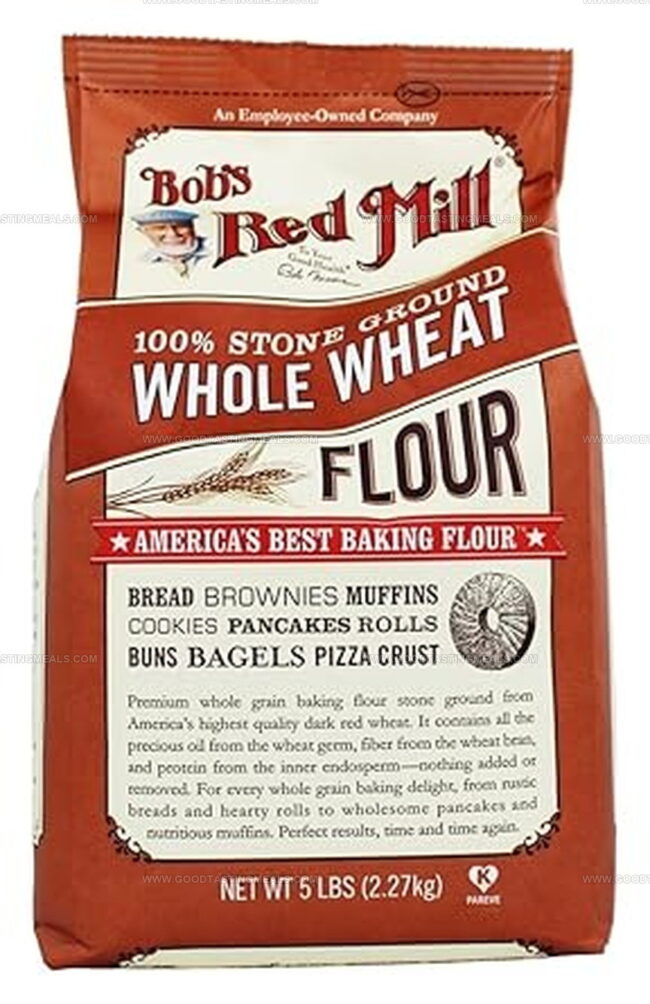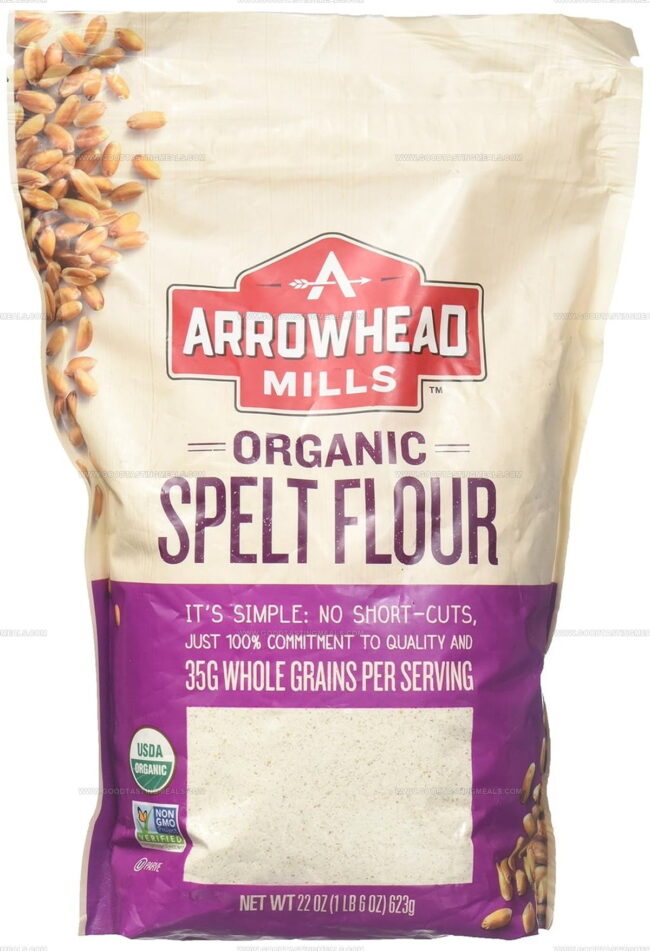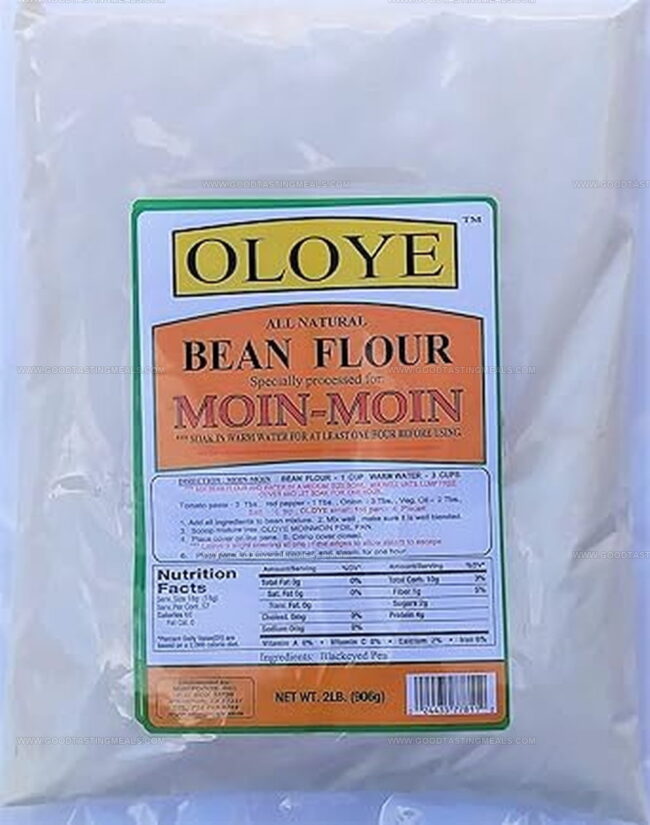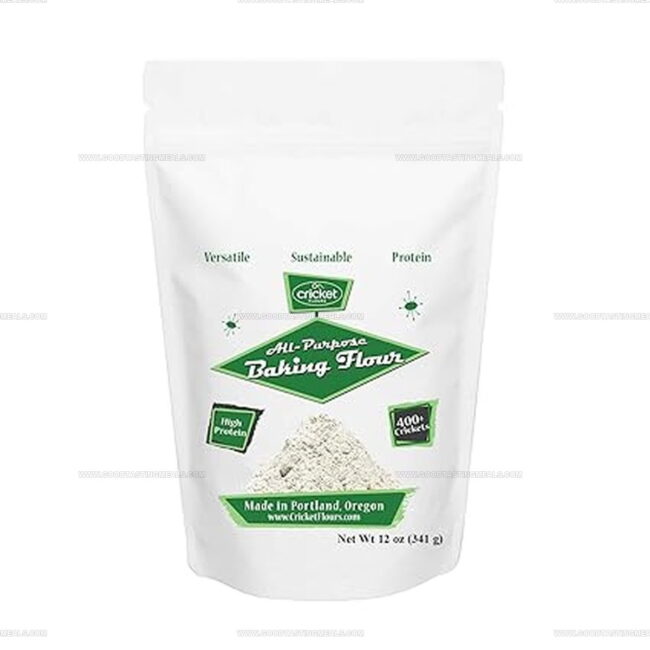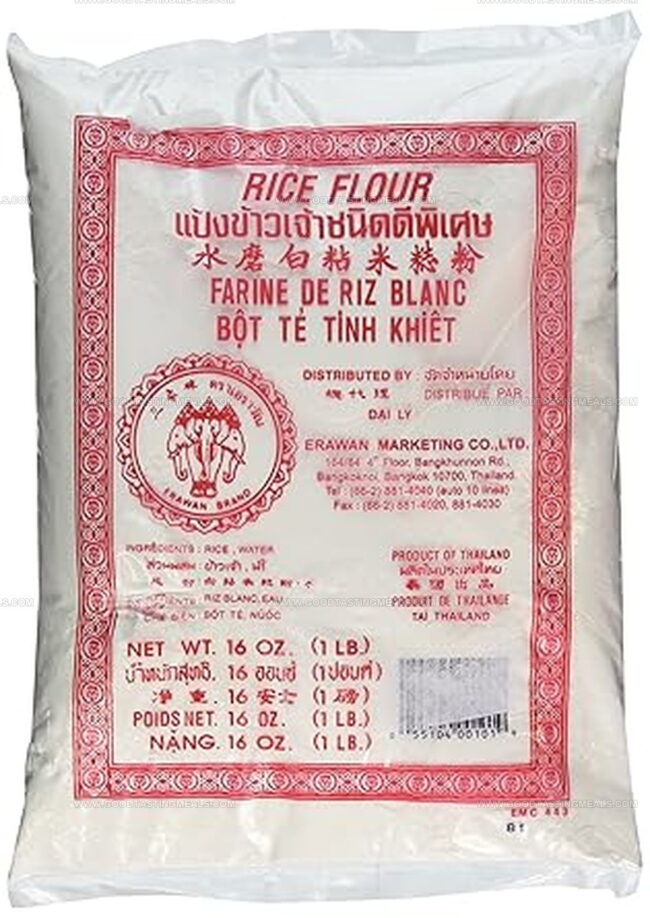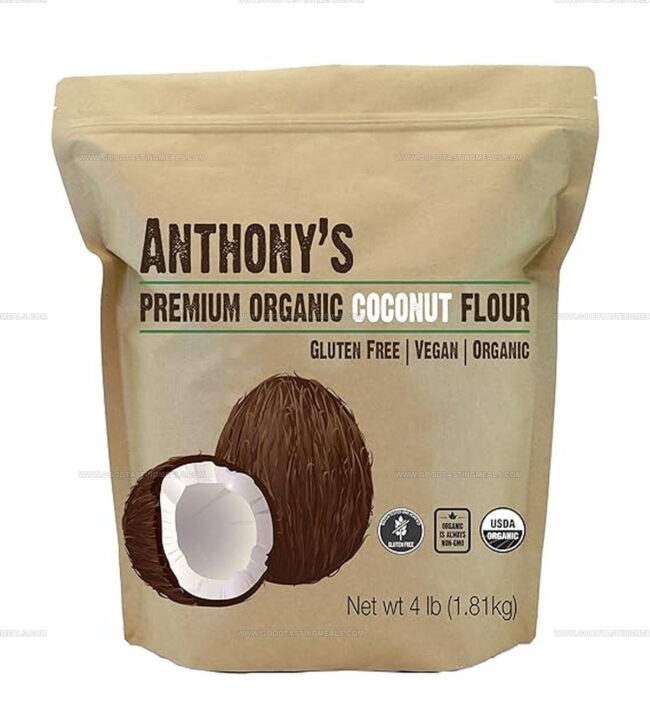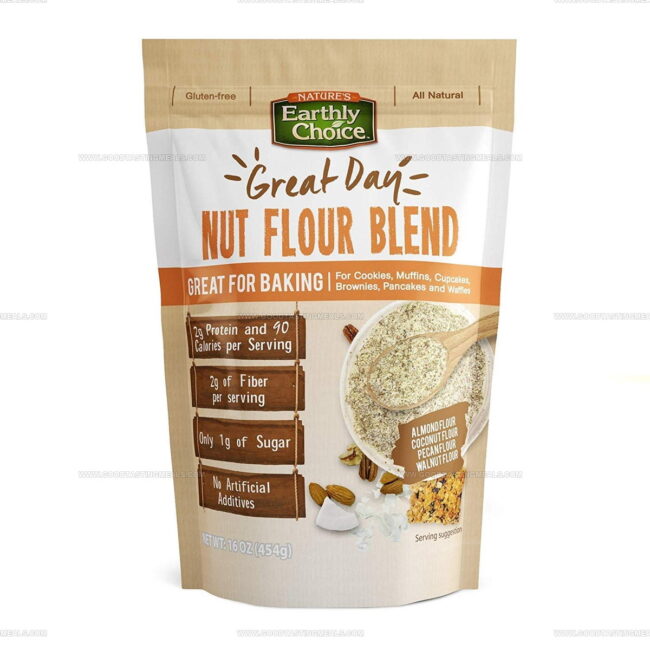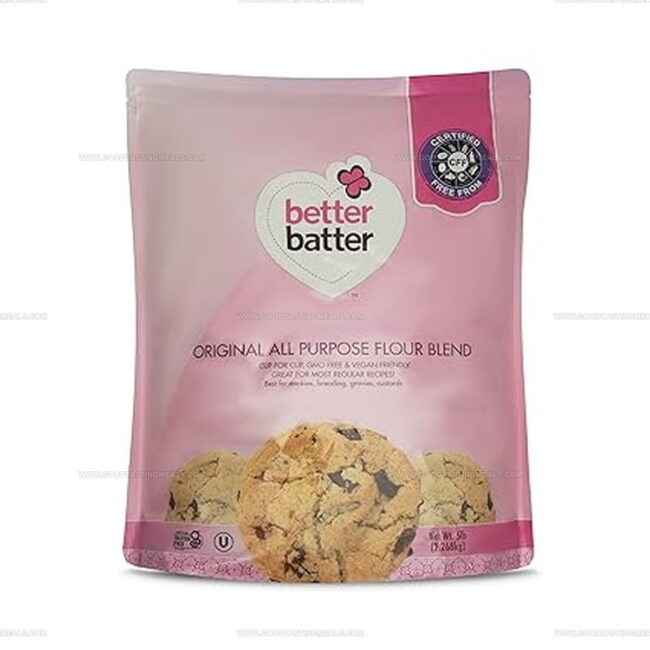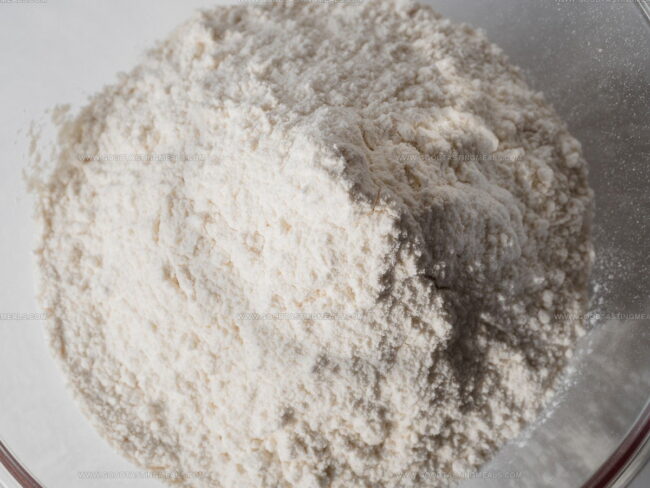12 Best Replacements for Self Rising Flour
Substitute for self rising flour options can rescue your baking project when the pantry feels bare.
It’s a common experience for home cooks to realize halfway through baking that this key ingredient is missing.
The good news? Several pantry staples can be combined to create an effective alternative without sacrificing quality or taste.
These replacements work because self rising flour simply combines regular flour with leavening agents and sometimes salt.
With just a few basic ingredients, you can replicate its function perfectly in most recipes.
Professional bakers often prefer making their own mixture anyway, as this gives them more control over the final product.
The world of flour substitutes opens up fascinating possibilities that might actually improve your favorite recipes beyond what you initially planned.
What Are Substitutes for Self-Rising Flour?
Self-rising flour being gone is a small hurdle, as you can mix other ingredients to create the same effect and keep the dough working properly. Doing so helps maintain the pace in the kitchen without extra effort.
Leavening Agent + All-Purpose Flour
Substituting all-purpose flour for self-rising flour is remarkably easy since self-rising flour simply combines white flour with a leavening agent like baking powder.
Many home bakers prefer making this swap because they can control exactly how much leavening agent goes into their recipes.
The chemical reaction from these agents creates those delicious air pockets that make cakes, muffins, and biscuits so wonderfully light and fluffy.
For perfect results, just add 1½ teaspoons of baking powder and ¼ teaspoon of salt to each cup of all-purpose flour.
Whole-Wheat Flour
Substituting whole-wheat flour for white flour in recipes significantly boosts nutritional value since it contains all three beneficial grain components - bran, endosperm, and germ.
Health studies show regular whole grain consumption reduces risks of heart disease, certain cancers, diabetes, and various infections.
For best results, your baked goods will need some adjustment as whole-wheat creates a denser texture than refined flour.
Many bakers start with a 50/50 mix before moving to full substitution, gradually allowing taste preferences to adapt to the nuttier flavor.
Spelled Flour
Spelled flour, an ancient grain nutritionally similar to wheat, works wonderfully as a substitute in baking when you need something different from self-rising flour.
For proper substitution, adding a leavening agent is necessary since spelled doesn't naturally rise on its own.
During preparation, remember that spelled absorbs more water than regular wheat flour, so reducing the liquid in your recipe slightly helps achieve the perfect consistency.
People with gluten sensitivities should note that spelled contains gluten, making it unsuitable for gluten-free diets despite its ancient grain status.
The nutty, slightly sweet flavor of spelled can enhance your baked goods while providing additional nutritional benefits compared to refined wheat products.
Amaranth Flour
Amaranth, a gluten-free pseudo-grain with ancient roots dating back thousands of years, stands out for containing all nine essential amino acids along with high levels of fiber, vitamins, and minerals.
In many recipes, this nutritional powerhouse can replace wheat flour despite not technically being a grain.
The dense, filling nature of amaranth flour makes it particularly suitable for pancakes and quick breads rather than lighter baked goods.
For fluffier results, a 50/50 combination of amaranth and a lighter flour creates better texture without sacrificing nutritional benefits.
Just remember that amaranth flour requires adding a leavening agent since it doesn't contain one naturally.
Bean Flour
Beans offer a surprising alternative to self-rising flour for anyone seeking gluten-free options in their baking adventures.
The nutritional value of beans stands out first, as they pack fiber, protein, and minerals while research shows they may help reduce cholesterol levels over time.
Substituting is straightforward - just use one cup of cooked, pureed beans (224 grams) plus a leavening agent for each cup of flour (125 grams) called for in recipes.
Black beans work especially well in chocolate-based treats since their dark color blends naturally with cocoa.
Oat Flour
Oat flour is a wholesome wheat flour alternative for baking enthusiasts, either bought ready-made or quickly created at home by blending dried oats into powder.
Many bakers appreciate its slightly different rising behavior, which requires extra leavening agents like baking powder - about 2.5 teaspoons for each cup of oat flour used in recipes.
People with gluten sensitivities should pay special attention when selecting oats since regular varieties often contain traces of gluten from processing facilities.
Quinoa Flour
Quinoa is a remarkable pseudo-grain with higher protein content than traditional grains, containing all nine essential amino acids while remaining completely gluten-free.
Its distinctive nutty flavor makes quinoa flour an excellent choice for enhancing muffins and quick breads with unique taste notes.
Many bakers find that using quinoa flour alone can result in dry baked goods, so combining it with other flours or adding extra moisture yields better results.
Recipes using this nutritious alternative typically need a leavening agent since quinoa flour doesn't naturally rise on its own.
Cricket Flour
Cricket flour is a unique gluten-free substitute made from milled roasted crickets, offering an impressive 7 grams of protein in just a two-tablespoon serving.
This alternative works best when combined with other flours rather than used alone, since complete substitution can make baked goods dry and crumbly.
The high protein content makes it an excellent nutritional booster for various recipes, though it won't suit vegetarian or vegan diets due to its insect origin.
Many bakers recommend starting with small amounts - perhaps replacing just 25% of regular flour - to get accustomed to its distinctive nutty flavor profile.
Rice Flour
Rice flour is a versatile gluten-free alternative to wheat flour, made by milling brown or white rice into a fine powder with a pleasantly neutral taste.
Many home cooks appreciate this pantry staple for thickening soups and sauces or creating deliciously moist cakes and perfect dumplings without gluten concerns.
The key difference from wheat flour lies in its lower absorption rate for liquids and fats, which can affect your baking results if not addressed properly.
For best outcomes, let your rice flour batters rest before baking and consider blending it with other gluten-free flours to better mimic wheat flour's properties.
Coconut Flour
Coconut flour offers a popular gluten-free alternative for people who can't tolerate traditional grain-based flours in their baking.
This unique flour, made from dried coconut meat, absorbs much more liquid than wheat flour, so you need significantly less; only about one-fourth to one-third cup of coconut flour can replace a full cup of regular flour.
Recipes using coconut flour require extra moisture and binding agents, typically six eggs per cup of flour plus an additional cup of liquid to prevent dry, crumbly results.
Many bakers find that following recipes specifically designed for coconut flour works better than experimenting with substitutions due to its distinctive properties and high fat content.
Nut Flours
Substituting nut flours for traditional wheat flour brings numerous health benefits while adding rich flavors to baked goods.
Almond flour leads the pack as the most popular option, followed by versatile alternatives like pecan, hazelnut, and walnut varieties that each contribute their unique taste profiles.
These gluten-free alternatives pack impressive amounts of protein, fiber, and healthy fats that regular flour simply can't match.
Smart bakers often mix nut flours with other flour types and add eggs to achieve the perfect structure in their creations.
Cold storage in your refrigerator or freezer prevents these nutrient-dense flours from spoiling quickly due to their natural oil content.
Alternative Flour Blends
Substituting flour types can sometimes lead to unexpected results, especially when swapping self-rising flour with alternatives.
Flour blends that are gluten-free or grain-free have become popular solutions for those wanting consistent baking outcomes without the guesswork.
Many bakers find that combining different flours creates the perfect balance of texture, rise, and flavor in their recipes.
These specialized blends typically resemble all-purpose flour rather than self-rising varieties, so adding a leavening agent remains necessary for proper rising.
Ready-made flour combinations are now widely available in grocery stores, though ambitious home bakers can experiment with creating their own custom mixes for personal preferences.
When Not to Substitute Self Rising Flour
Self-rising flour can be handy in baking, but there are some times when using it as a substitute will hurt your recipe’s texture, flavor, or rise.
DIY Self Rising Flour: The Right Ratios
Making your own self-rising flour at home is quick, easy, and can save you a trip to the store while giving you full control over your baking.
Troubleshooting Texture and Rise With Flour Substitutes
Switching out flours in baking can change the way your cakes, muffins, or breads rise and feel, but a few smart adjustments can help you get the results you want every time:
Common Self Rising Flour Substitute Questions
1. What can I use instead of self rising flour?
You can make your own by combining all-purpose flour with baking powder and a pinch of salt as a substitute for self rising flour.
2. How much baking powder and salt do I add to all-purpose flour to make a self rising substitute?
Add 1 1/2 teaspoons of baking powder and 1/4 teaspoon of salt to each cup of all-purpose flour to create a self rising flour substitute.
3. Will using a substitute affect the texture of my baked goods?
The texture should be very similar if you measure the ingredients accurately, but slight differences may occur based on your flour or leavening brand.
4. Can I use whole wheat flour instead of self rising flour?
Yes, but your baked goods may be denser. Add the same ratio of baking powder and salt to whole wheat flour for best results.
5. Is there a gluten-free alternative for self rising flour?
Yes, combine gluten-free all-purpose flour with baking powder and salt using the same ratio as for regular flour.
6. Can I use self rising flour substitutes in cakes and biscuits?
Absolutely, your homemade blend works well in cakes, biscuits, pancakes, and most recipes calling for self rising flour.


